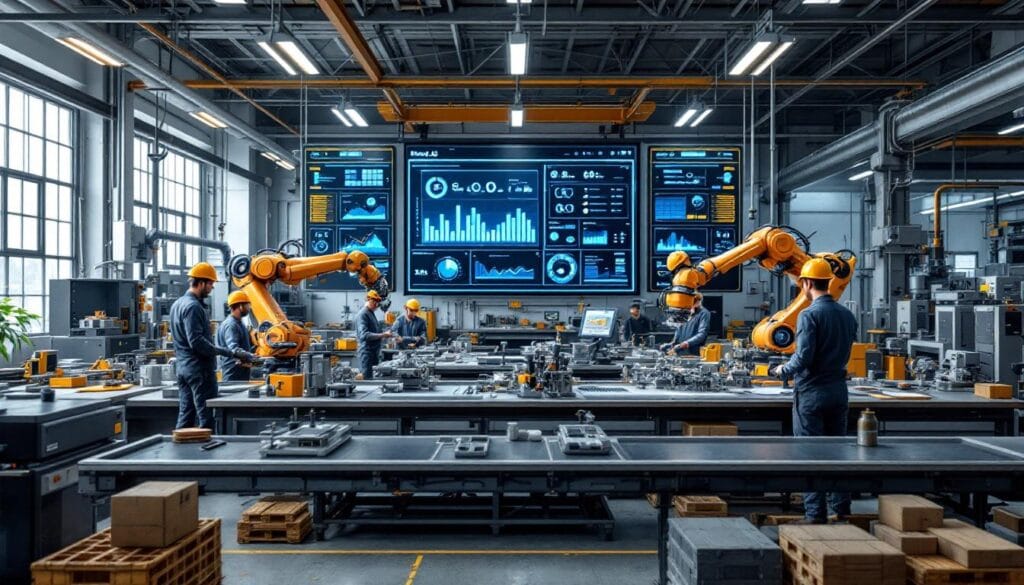“`html
The industrial meter market is experiencing remarkable expansion, projected to grow from $1.13 billion in 2025 to $1.69 billion in 2035. This sustained growth, with a compound annual growth rate of 4.1%, is driven by the increasing integration of automation and artificial intelligence across various sectors. The widespread adoption of Industry 4.0 practices also plays a key role in this dynamic.
Industries are continuously modernizing their manufacturing and operational processes, increasing the demand for accurate and reliable industrial meters. These devices, whether electronic, mechanical, or electromechanical, are essential for ensuring operational efficiency and accuracy. The shift toward digital and multifunction meters underscores a trend towards better integration of real-time data. Moreover, the rise of IoT and wireless monitoring systems further enhances the relevance of these technologies in modern industrial environments.

“`html
The industrial meter market is in full expansion and is expected to reach a value of $1.69 billion by 2035. This sustained growth is primarily driven by the rise of automation and the increasing adoption of Industry 4.0 practices across various sectors. This trend reflects the growing need for industries to modernize their manufacturing and operational processes to remain competitive in a constantly evolving global environment. Table des matières Several factors contribute to the rapid growth of the industrial meter market. The increased integration of automation into production processes is one of the main drivers. Companies are looking to improve their operational efficiency by adopting advanced technologies such as programmable logic controllers (PLC), automated manufacturing tools, and robotic systems, which require precise accounting of operations and machine cycles. Moreover, the adoption of Industry 4.0, which encompasses the Internet of Things (IoT), artificial intelligence (AI), and advanced data analytics, also stimulates demand for sophisticated industrial meters. These technologies enable real-time monitoring, predictive maintenance, and process optimization, thereby reinforcing the need for reliable and precise counting devices. Finally, the rise of sectors such as food and beverages, healthcare, and electronics creates additional demand for industrial meters suited to specific environments and high precision requirements. The shift toward smart manufacturing leads to an increased use of industrial meters in PLCs, manufacturing tools, assembly lines, and robotics. These systems require precise tracking of machine cycles, article counts, and operation times—functions that industrial meters perform effectively. There is a notable shift from traditional mechanical meters to digital and multifunction variants. These meters offer better flexibility, improved display options, compact designs, and integration with software systems, making them more attractive in modern configurations. Integration with Internet of Things (IoT) platforms enables wireless data transmission and remote monitoring of equipment performance. Industrial meters are increasingly equipped with communication capabilities such as Bluetooth, Wi-Fi, or Ethernet, ensuring a seamless flow of data to central monitoring systems. Meters are widely used in energy consumption analysis and power tracking applications, particularly in facilities aimed at reducing operational costs and carbon footprints. They help track the number of operations or the on/off cycles of energy-intensive machines, thus facilitating more efficient energy management. With the decrease in equipment size and the growing demand for customized solutions, manufacturers are offering miniaturized meters without compromising functionality. OEMs are also providing tailored counting solutions for specific applications in the pharmaceutical, packaging, and food processing sectors. The industrial meter market is moderately fragmented, with a mix of global giants and regional players. Competition is intensifying as companies focus on innovation, smart features, and user-friendly interfaces. Key players are investing in research and development to introduce high-performance meters with digital interfaces and compatibility with industrial protocols. Notable market players include Siemens AG, Schneider Electric SE, Omron Corporation, Rockwell Automation, Inc., Honeywell International Inc., and many others. These companies aim to stand out with innovative solutions and strategic regional expansion. The market is segmented by type, end use, and region. Industrial meters come in several categories, including preset meters, electromagnetic meters, time meters, totalizing meters, mechanical meters, and digital meters. Each type caters to specific needs in terms of accuracy, durability, and compatibility with existing systems. Major end uses include the sectors of food and beverages, healthcare, semiconductors and electronics, and industrial manufacturing. Each sector has specific counting requirements, thus influencing the demand for specific types of industrial meters. The Asia-Pacific region dominates the global landscape, followed by North America and Europe. Emerging economies also present significant growth potential, supported by increased investment in automation and Industry 4.0. The Asia-Pacific region is the global leader due to the presence of large manufacturing industries in China, Japan, South Korea, and India. This region benefits from rapid adoption of automation technologies and Industry 4.0, driving high demand for advanced industrial meters. North America closely follows, supported by a strong presence of high-tech sectors and proactive adoption of industrial innovations. Europe, on the other hand, benefits from a well-developed industrial infrastructure and policies favorable to technological innovation. Emerging economies in Africa, the Middle East, and Latin America are also beginning to invest heavily in automation and Industry 4.0 technologies, opening new growth opportunities for the industrial meter market. The Internet of Things (IoT) is transforming the operation of industrial meters by enabling wireless connectivity and seamless integration with centralized management systems. Meters equipped with communication capabilities such as Bluetooth, Wi-Fi, or Ethernet facilitate real-time data transmission, enabling continuous monitoring and predictive maintenance. This connectivity not only enhances operational efficiency but also increases the ability to analyze data to optimize industrial processes. Companies can thus make informed decisions based on precise and instant information, strengthening their competitiveness in the global market. Effective energy management and carbon footprint reduction initiatives are becoming priorities for many industries. Industrial meters play a crucial role in these efforts by providing accurate data on energy consumption and machine operation cycles. By tracking the number of operations or the on/off cycles of energy-intensive equipment, companies can identify areas where savings can be made and where improvements in energy efficiency are possible. This results in reduced operational costs and a significant contribution to environmental objectives. The future of industrial meters is closely linked to technological innovations in the fields of AI, IoT, and data analytics. Smart meters capable of learning and adapting based on operational conditions are under development, offering better precision and greater flexibility. Furthermore, the trend towards miniaturized and customized devices continues to evolve, addressing the specific needs of industries such as pharmaceuticals, packaging, and food processing. These innovations allow for easier integration into varied environments and reduce the footprint of industrial equipment. Finally, the increase in connectivity and interoperability between different industrial systems paves the way for more integrated and harmonized counting solutions, facilitating overall operations management and continuous process optimization.What are the main growth factors of the industrial meter market?
What are the key trends shaping the industrial meter market?
The rise of automation and Industry 4.0 initiatives
The growing demand for digital and multifunction meters
The growth of IoT and wireless monitoring
Energy management applications
Miniaturization and customization trends
How does competition shape the industrial meter market?
What are the key segments of the industrial meter market?
By type
By end use
By region
What are the regional prospects of the industrial meter market?
What is the impact of IoT and wireless connectivity on industrial meters?
How do energy and environmental management influence the industrial meter market?
What innovations are shaping the future of industrial meters?
“`




